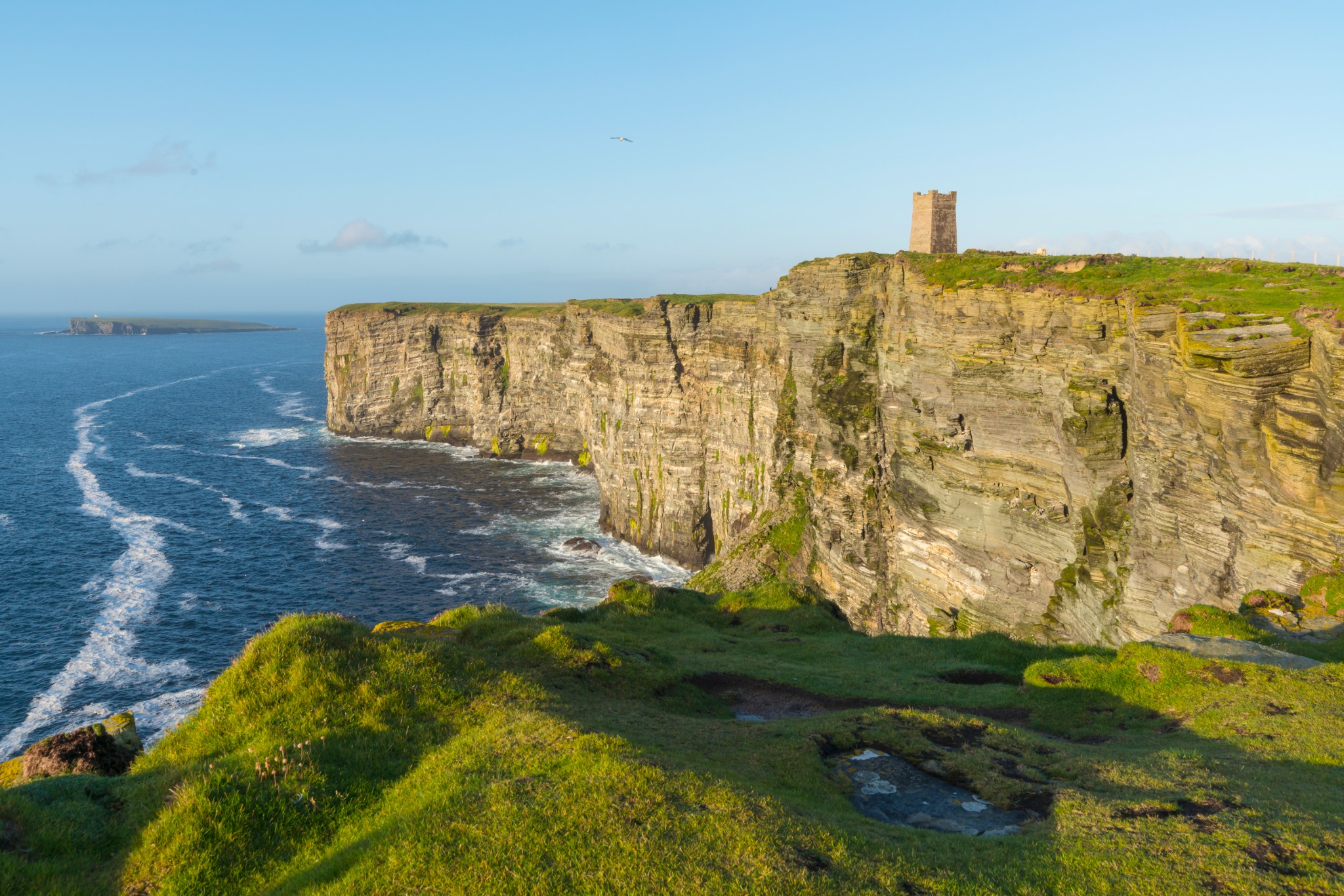On the 5th June 1916, HMS Hampshire left the sheltered waters of Scapa Flow and entered the stormy seas off the west coast of Orkney.
It was the midst of the First World War and Scapa Flow had been chosen as the main base for the Royal Navy fleet. A sheltered natural harbour ringed by many of Orkney's islands, it was ideally situated for guarding the surrounding waters including the North Sea.
The armoured cruiser was bound for Russia on a diplomatic mission. On board was Lord Kitchener, famously immortalised in the iconic recruitment posters created during the First World War which encouraged Britons to sign up to the army. At the outbreak of the war, the Prime Minister at the time, Herbert Henry Asquith, appointed Kitchener as Secretary of War due to his considerable military experience. At the beginning of the First World War he was successful in raising the largest volunteer army that Great Britain had ever seen.

In 1916 he was appointed to HMS Hampshire to embark on a secret mission to persuade the Tsar to boost Russia's efforts in the conflict. As the warship set off from Scapa Flow, a force nine gale was blowing and the two escorting destroyers, HMS Unity and HMS Victor, were instructed to return to port as the weather deteriorated. The Hampshire continued on alone and, at about 8.45 pm on the 5th June, it struck one of many mines that had been laid off the coast of Marwick Head by the German submarine U-75 the week before. The ship sank in just 15 minutes.
Sadly, there were only 12 survivors, with over 700 lives lost including Lord Kitchener, although his body was never recovered. None of the survivors included Kitchener’s party and events around the explosion led to numerous conspiracy theories, some even questioned whether Kitchener was still alive. What isn't in dispute is that a significant number of lives were lost in the tragedy. The graves of over 160 men and officers of the Royal Navy recovered from the sea and shore lie within Lyness Royal Naval Cemetery in the Orkney island of Hoy.

In 1926 the 48ft high Kitchener Memorial was unveiled after being built by public subscription. An inscription reads 'This tower was raised by the people of Orkney in memory of Field Marshal Earl Kitchener of Khartoum on that corner of his country, which he had served so faithfully, nearest to the place where he died on duty'. The stone tower punctuates the skyline at Marwick Head on the west coast of the Orkney mainland, an RSPB Nature Reserve with dramatic cliffs that attract an impressive number of seabirds.
In 2016, the Orkney Heritage Society raised funds to build an arc-shaped commemorative wall at the site to better remember all the men who were killed. The wall features the names of the 737 men that died on HMS Hampshire and the nine men killed on the HM Drifter Laurel Crown. The Laurel Crown was part of a flotilla of eight small vessels despatched on 22nd June 1916 to sweep for mines near the wreck of the HMS Hampshire when she struck another of the mines laid by U-75. All crew were killed, including George Petrie from Orkney.

Today the HMS Hampshire lies on the seabed less than 2 miles from the coast, placed under official government protection as a war grave in 2002. However, before this status the propeller and shaft were removed from the wreck by a German salvage ship in 1985. They were returned to Orkney in 1988 and are now on display at Lyness in Hoy. At the start of the walk to the monument there is also a deck gun salvaged from the wreck.
The Kitchener Memorial stands tall over the waters where the tragedy happened and dominates the landscape for miles around, ensuring that all the men of the HMS Hampshire are permanently acknowledged from both land and sea.
Susanne Arbuckle hosts the Adventures Around Scotland blog. You can also find her on Facebook, Instagram and Twitter.
The Promoting Orkney project has been part financed by the Scottish Government and the European Community Orkney LEADER 2014-2020
